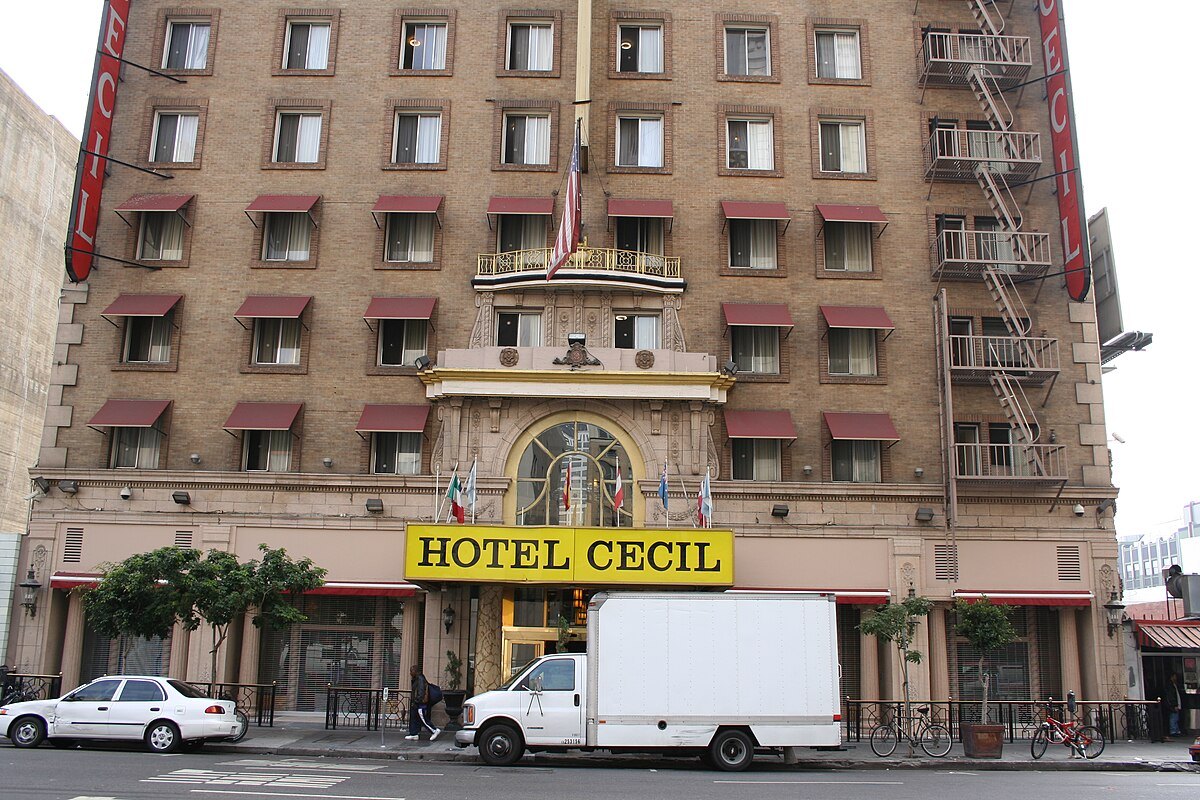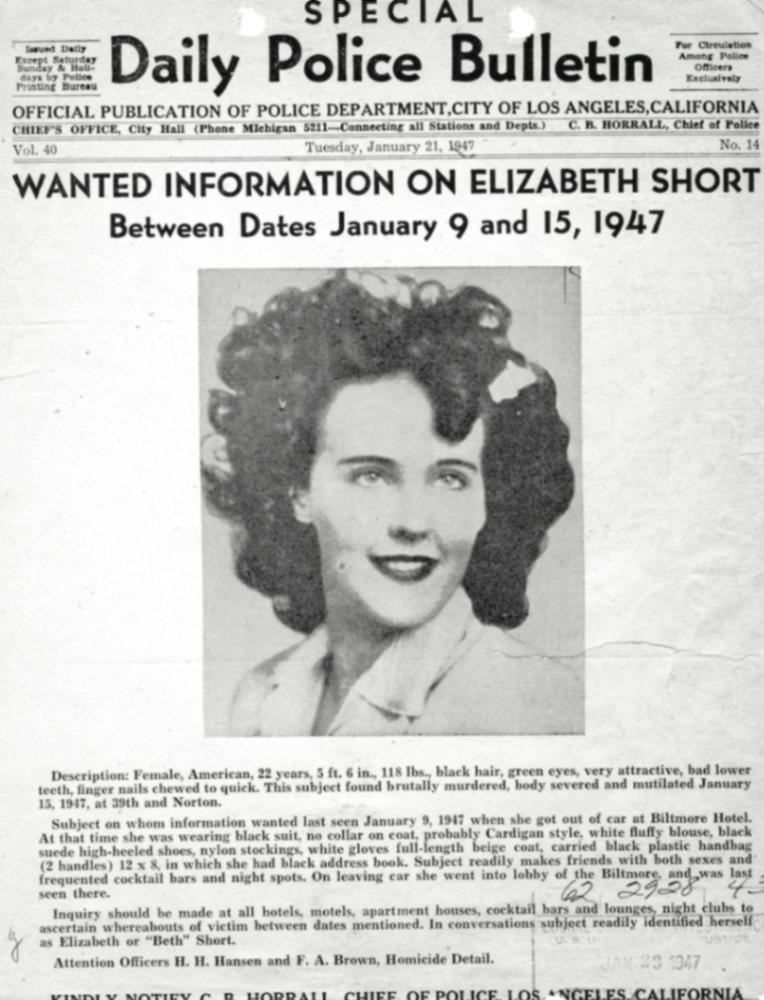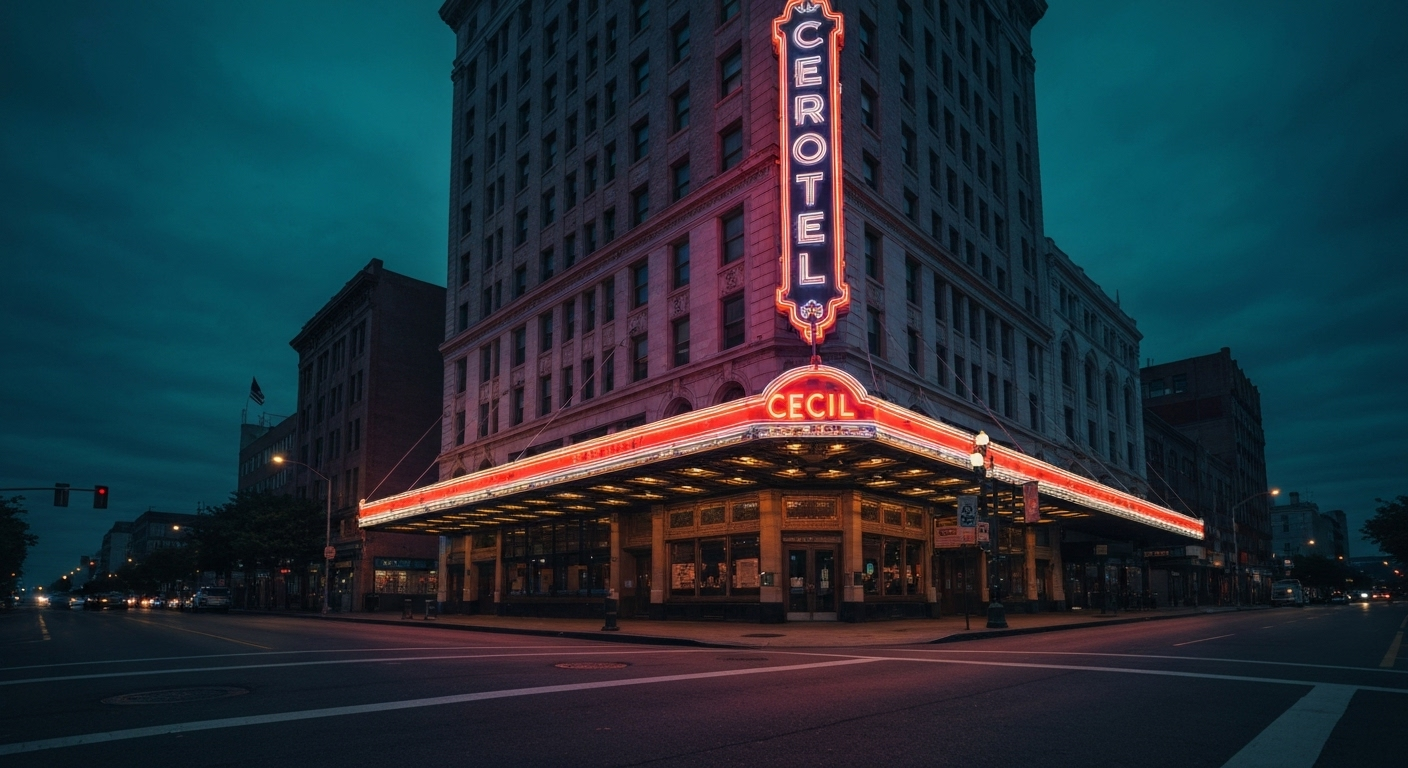Key Highlights
- The Cecil Hotel in downtown Los Angeles has a dark history, earning it a reputation as a haunted hotel.
- It was once home to notorious serial killers, including Richard Ramirez, also known as the "Night Stalker."
- Numerous mysterious deaths and suicides have occurred at the hotel since the 1930s.
- The puzzling death of Elisa Lam in 2013 brought the hotel worldwide attention.
- After years of infamy and a major renovation, the Cecil Hotel has now been repurposed into affordable housing.
Introduction
Welcome to the story of the Cecil Hotel, a building in downtown Los Angeles with a past as dark as it is fascinating. What started as a glamorous hotel in the 1920s soon became the backdrop for some of the city's most chilling events. From unexplained suicides to housing notorious criminals, the hotel’s history is filled with mysterious deaths that have captured public fascination for decades. Are you ready to explore the eerie tales lurking within its walls?
The Origins of the Infamous Cecil Hotel in Downtown Los Angeles
When the Cecil Hotel first opened its doors, it was a symbol of opulence and ambition. With its stunning marble lobby and grand design, it was intended to be a jewel of Los Angeles, attracting business travelers and tourists alike. Newspaper articles from the time, like those in the Los Angeles Times, heralded its arrival.
However, this golden era was short-lived. Economic hardship and the hotel's location would soon steer it down a much darker path, a far cry from its glamorous beginnings. Let’s look at how its story began.
The Grand Opening: A Symbol of 1920s Glamour in LA

Built in the 1920s by hotelier William Banks Hanner, the Cecil Hotel was designed to be a grand destination. The Beaux-Arts style building was a massive undertaking, reportedly costing over $1 million to construct. This was a significant investment, intended to create a luxurious experience for its guests.
The main hotel boasted 700 rooms, a magnificent marble lobby, beautiful stained-glass windows, and even palm trees to complete the glamorous atmosphere. As documented by the Los Angeles Times, it was designed to cater to international businessmen and middle-class tourists exploring downtown Los Angeles.
For a brief period, the Cecil Hotel lived up to this vision. It represented the prosperity and ambition of the era, standing proudly as a new landmark in a rapidly growing city. But the world around it was about to change drastically.
Early Success and the Impact of the Great Depression
The hotel’s initial success came to a screeching halt just a few years after its opening with the onset of the Great Depression in 1929. The economic collapse devastated the country, and the Cecil Hotel’s fortunes plummeted. The glamorous guests it was built for disappeared, and the hotel had to adapt to survive.
To stay afloat, the Cecil began offering cheap rooms for both short-term and long-term stays. This new model turned it into something closer to a hostel, with tenants often sharing bathrooms. Its affordability and location near Skid Row and Pershing Square began to attract a different clientele.
The hotel soon gained a reputation as a haven for people down on their luck, transient workers, and those involved in criminal activity. This marked the beginning of its transformation from a luxurious retreat to a place synonymous with hardship and tragedy.
How Hotel Cecil LA Became Synonymous with Tragedy
The Cecil Hotel's slide into notoriety wasn't just economic; it quickly became the scene of numerous tragedies. The building became a backdrop for a disturbing number of mysterious deaths, suicides, and violent crimes. Each incident added a new layer to its grim reputation.
From people checking in under false names before their deaths to bizarre accidents, the hotel was no stranger to being a crime scene. These events set the stage for the dark legends that would follow.
The First Recorded Deaths and the Beginning of a Dark Reputation
The hotel's history of death began not long after the Great Depression took hold. The first recorded suicide occurred in 1931 when a guest named W. K. Norton ingested poison capsules in his room. Many who died at the hotel checked in under false names, making identification difficult and adding to the mystery.
One of the most shocking early incidents involved Dorothy Jean Purcell in 1944. The 19-year-old, who claimed she was unaware she was pregnant, gave birth to a baby boy in her hotel bathroom. Believing the baby was stillborn, she threw him out the window.
Purcell was arrested for murder, but the court later found her not guilty by reason of insanity. Cases like these, along with the later accidental drowning of Elisa Lam, cemented the hotel’s status as a place of profound tragedy.
Plunge of Pauline Otton: Accidental Victim and Urban Legend
One of the most bizarre and tragic events in the hotel's history occurred in 1962, contributing significantly to its urban legend status. A 27-year-old guest named Pauline Otton jumped from her ninth-floor window after an argument with her husband.
Her story took a horrifying turn when she landed on a 65-year-old pedestrian, George Gianinni, who was walking on the sidewalk below. Both were killed instantly. Initially, police thought it might have been a double suicide.
However, evidence quickly showed that Gianinni had his hands in his pockets at the time of impact, confirming he was an unsuspecting, accidental victim. This incident, where a suicide unintentionally became a homicide, is one of the most infamous tales associated with the Cecil.
Notorious Incidents and Mysterious Deaths at Cecil Hotel LA California
The hotel's connection to tragedy didn't stop with suicides. It also became linked to some of Los Angeles' most famous unsolved murders, including the case of Elizabeth Short, famously known as the Black Dahlia.
Another unsolved killing, that of a local woman named "Pigeon Goldie" Osgood, took place within the hotel itself. These high-profile cases further solidified the Cecil's reputation as a place where darkness seemed to congregate.
The Unsolved Case of Elizabeth Short — The Black Dahlia Connection

Perhaps the most famous unsolved murder in Los Angeles history has a rumored link to the Cecil Hotel. In 1947, the body of aspiring actress Elizabeth Short was found mutilated in a vacant lot not far from the hotel. The media dubbed her the "Black Dahlia," and her case remains a chilling mystery.
During the investigation, rumors swirled that Short had been seen at the Cecil's bar in the days leading up to her disappearance. Some reports even suggested she may have stayed there as a guest.
While these claims have never been officially confirmed, the association has stuck. The mere possibility that the Black Dahlia spent some of her final days at or near the Cecil has forever tied the hotel to one of America’s most haunting true crime stories.
Infamous Suicides and Other Unexplained Happenings
Beyond the high-profile cases, the Cecil was the site of many other tragedies. In 1964, a well-known local resident, "Pigeon Goldie" Osgood, was found dead in her hotel room. She had been sexually assaulted and stabbed, and her murder remains unsolved to this day. A suspect was arrested but later cleared, leaving the case cold.
The list of deaths also includes numerous people who fell from the building's upper floors. Guests like Helen Gurnee in 1954 and Julia Frances Moore in 1962 were among those who jumped or fell to their deaths, adding to the hotel's grisly count.
These incidents, ranging from unsolved murders to tragic suicides, created an atmosphere of persistent dread. The hotel became a place where the unexpected and the macabre seemed almost commonplace.
Serial Killers and Criminals Who Stayed at Cecil Hotel DTLA
As if its history of suicides and murders wasn't enough, the Cecil Hotel also became a temporary home for some of the world's most terrifying serial killers. Its cheap rates and discreet atmosphere made it an ideal hiding place for those looking to evade the law.
Infamous figures like Richard Ramirez and Jack Unterweger both resided at the hotel during their horrific crime sprees, adding another layer of darkness to the building's already disturbing legacy.
Richard Ramirez: The Night Stalker’s Shocking Residency
In the mid-1980s, one of the most feared serial killers in American history, Richard Ramirez, called the Cecil Hotel home. Known as the "Night Stalker," Ramirez terrorized Los Angeles, and he did so while living on the hotel's top floor for just $14 a night.
The hotel’s chaotic environment provided the perfect cover for his gruesome activities. According to reports, Ramirez would discard his bloody clothes in the hotel dumpster after a crime and return to his room without raising suspicion. His presence went unnoticed for months.
The fact that one of the most prolific serial killers could operate from within its walls is a key reason why the Cecil is considered one of the most haunted and sinister buildings in Los Angeles. It was a true crime scene hidden in plain sight.
Jack Unterweger and His Chilling Link to Hotel Cecil LA
Years after Ramirez, another serial killer checked into the Cecil. Jack Unterweger, an Austrian writer and convicted murderer, was released from prison on parole in 1990. He traveled to Los Angeles, supposedly to write about crime and sex work in the city.
He specifically chose to stay at the Cecil, reportedly due to its connection to Richard Ramirez. During his stay in 1991, Unterweger murdered three local sex workers, strangling them with their own bra straps. His method mirrored the sexual assaults and murders he had committed in Europe.
Eventually, killer Jack Unterweger was caught and convicted of nine additional murders. The residency of not one, but two brutal serial killers cemented the Cecil Hotel’s reputation as a magnet for evil.
The Case of Elisa Lam and Worldwide Fascination
In 2013, the Cecil Hotel was thrust back into the international spotlight with one of its most baffling cases yet: the disappearance and death of Elisa Lam. A 21-year-old Canadian student, Lam vanished from the hotel, leaving behind a series of puzzling clues.
The case gained worldwide attention after the police released bizarre security footage of Lam in a hotel elevator. Her story became a modern-day mystery, fueled by digital-age speculation, and it remains one of the most talked-about mysterious deaths of the 21st century.
The Security Footage That Sparked Global Speculation
The key piece of evidence that captivated the world was a four-minute video from a hotel elevator. The footage showed Elisa Lam acting erratically, pressing multiple buttons, hiding in the corner, and appearing to speak to someone unseen in the hallway. The elevator doors strangely failed to close.
When the Los Angeles Police Department released the video to the public, it went viral on social media. Amateur detectives and conspiracy theorists across the globe began analyzing every frame, proposing theories that ranged from paranormal activity to foul play.
This video, combined with the hotel's sinister past, led many to believe something supernatural was at play. This modern mystery, broadcast to millions online, is a major reason why the Cecil Hotel is still considered so haunted today.
The Aftermath: How the Tragedy Changed Public Perception
Weeks after she disappeared, the mystery took a grim turn. Following guest complaints about low water pressure and an odd taste, maintenance workers discovered Lam’s body inside a closed water tank on the hotel roof. The official cause of death was ruled an accidental drowning, with her bipolar disorder cited as a contributing factor.
Despite the official ruling, questions lingered about how she accessed the roof and got into the tank. The death of Elisa Lam became a cultural phenomenon, inspiring documentaries like Netflix's "Crime Scene: The Vanishing at the Cecil Hotel" and serving as inspiration for "American Horror Story: Hotel."
The case brought renewed attention to the hotel's dark history while also opening up important conversations about mental health issues. It remains the Cecil's most famous and haunting modern tragedy.
The Modern Era: Renovation, Rebranding, and New Purpose
In an attempt to escape its dark past, the Cecil Hotel has undergone several transformations. One major effort was the creation of a boutique hostel within the hotel called Stay on Main, aimed at attracting a younger, tourist crowd and separating itself from the Cecil's reputation.
More recently, the building has taken on a completely new identity. After extensive renovations, it has partnered with the Skid Row Housing Trust to provide much-needed affordable housing, signaling a new chapter for the infamous building.
From Stay on Main Youth Hostel to Affordable Housing Initiatives
In 2011, part of the Cecil was rebranded as Stay on Main. This "hotel-within-a-hotel" had a separate entrance and a brighter, more modern design to appeal to budget travelers. However, shared elevators meant guests of both establishments still mingled, and the Cecil’s reputation was hard to shake. In 2017, the entire building closed for a massive $100 million renovation.
After years of redevelopment, the hotel reopened in December 2021 with a new mission. In a partnership between the owner and the Skid Row Housing Trust, the building was repurposed into affordable housing for low-income residents of Los Angeles. This move is one of the most significant affordable housing initiatives in the area.
This transformation gives the historic building a new purpose, aiming to serve the community and finally move beyond its dark history.
Milestone — Year / Description
- Rebranding — 2011 / A portion of the hotel is rebranded as "Stay on Main," a budget-friendly hostel with a separate entrance.
- Closure — 2017 / The entire hotel closes for a comprehensive, multi-million dollar renovation.
- Reopening — 2021 / The building reopens as "Hotel Cecil Apartments," providing 600 units of affordable housing for low-income individuals.
Conclusion
The Cecil Hotel's history is as complex and haunting as the city it resides in. From its glamorous beginnings in the 1920s to the tragic events that cemented its dark reputation, the stories intertwined with this hotel are a captivating blend of mystery and reality. As we reflect on its past, it's essential to recognize how these occurrences have shaped public perception and cultural narratives surrounding the hotel. Whether you’re drawn in by the allure of its infamy or the tales of those who walked its halls, the Cecil Hotel remains a significant chapter in Los Angeles' rich history. If you're intrigued and want to learn more or even explore the area for yourself, consider planning your visit to experience this iconic landmark firsthand!





